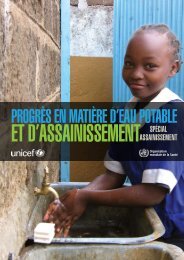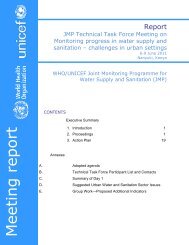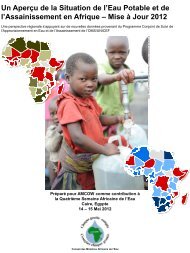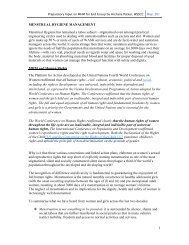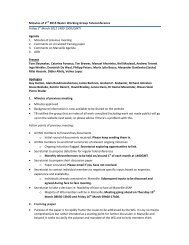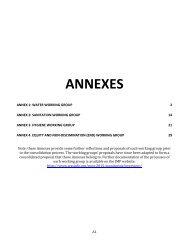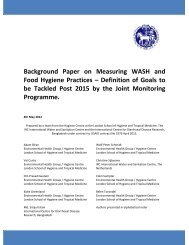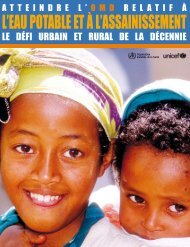rapid assessment of drinking-water quality in the republic of tajikistan
rapid assessment of drinking-water quality in the republic of tajikistan
rapid assessment of drinking-water quality in the republic of tajikistan
Create successful ePaper yourself
Turn your PDF publications into a flip-book with our unique Google optimized e-Paper software.
Water sources were tested for fluoride at all 1620 sites visited. Of <strong>the</strong>se, 99.7% <strong>of</strong> <strong>the</strong> samples met<br />
<strong>the</strong> WHO guidel<strong>in</strong>e value <strong>of</strong> 1.5 mg/l, although only 73.8% met <strong>the</strong> current national standard <strong>of</strong> 0.7<br />
mg/l (Table 3.7). Noncompliance was particularly high <strong>in</strong> Khatlon and Sughd. The maximum<br />
fluoride concentration found was 1.95 mg/l, and <strong>the</strong> median was 0.50 mg/l. These figures are likely to<br />
improve <strong>in</strong> <strong>the</strong> future, because it has been suggested <strong>in</strong> <strong>the</strong> current revision <strong>of</strong> sanitary norms and<br />
<strong>water</strong>-supply rules (see Section 1.2) that a lower national standard for fluoride be used (<strong>of</strong> 1.2 mg/l).<br />
Arsenic<br />
Arsenic accumulates <strong>in</strong> humans and is concentrated <strong>in</strong> <strong>the</strong> food cha<strong>in</strong>. It is associated with sk<strong>in</strong><br />
disease and cancers. Exposure to <strong>dr<strong>in</strong>k<strong>in</strong>g</strong>-<strong>water</strong> that conta<strong>in</strong>s low concentrations <strong>of</strong> arsenic (



